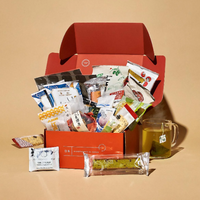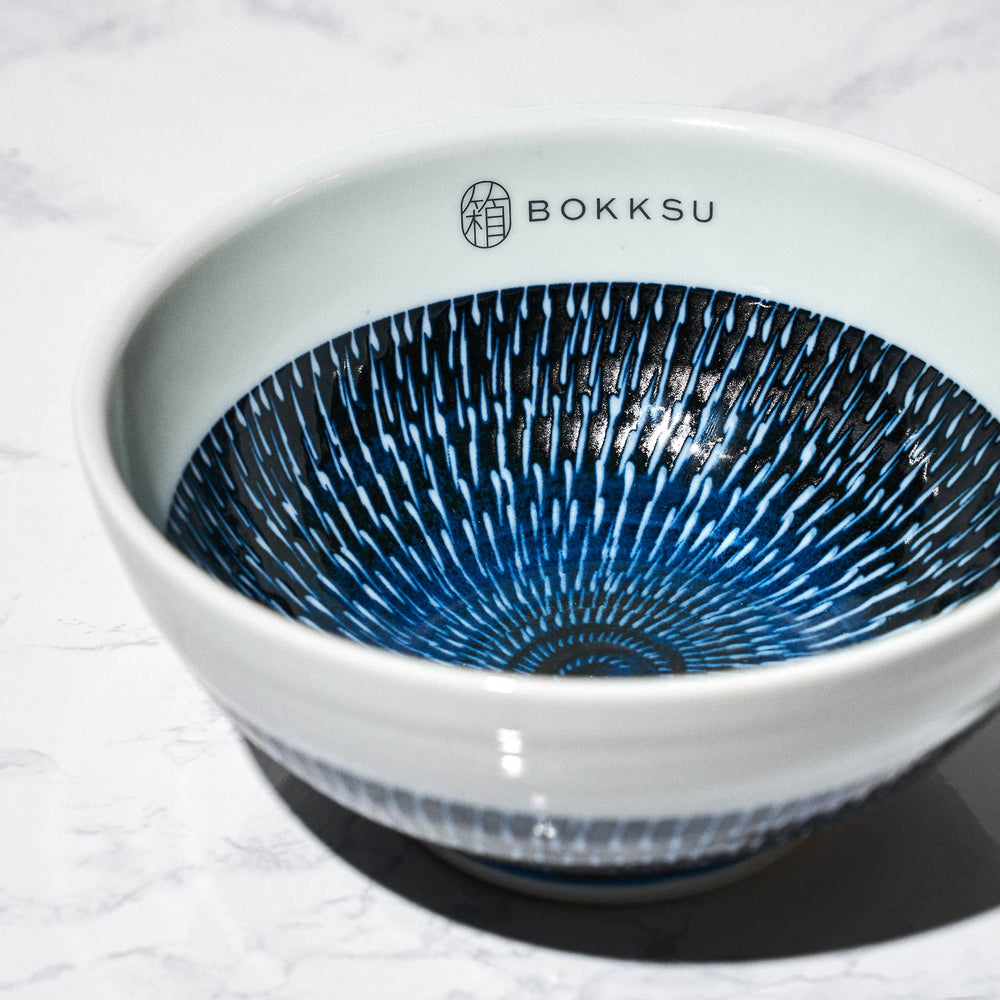Tsukemen vs. Ramen: What’s the Difference and Which Should You Try?
Most ramen dishes are served hot or cold, but tsukemen offers the best of both styles. Also known as dipping ramen noodles, this contrasting dish is a must-try for noodle lovers around the world.
In this post, we’ll explore the history of tsukemen, how it differs from ramen, and how to enjoy it like a true Tokyoite.
Introduction: What is Tsukemen?

Tsukemen (つけ麺 or tsuke-men) is a type of ramen dish consisting of cold noodles and hot soup served in separate bowls. In English, tsuke is the term for "dipping, and men means “noodles.” Hence tsukemen literally translates to “dipping noodles.”
This popular Japanese dipping noodle dish differs from regular ramen because of its thicker noodles and more flavorful broth. It also has a mixed serving style (hot and cold), plus you need to dip the noodles in the bowl of broth. You will find tsukemen in ramen shops and Taishoken restaurants throughout Japan, especially in Tokyo, its city of origin.
Most tsukemen dishes are made with soba or udon noodles. The broth, which functions like a dipping sauce, is often made from dashi (Japanese soup stock), seasonings, and aromatics. Additional ingredients, such as nori, tamagoyaki, fish cake, and pork belly, may be used as toppings or sides.
If you’re a fan of noodles, tsukemen is a must-try for you. It features a broth with a flavor so intense that some people have to dilute it with water. This broth has several variations and could be chunky or light, depending on its base ingredients. Let’s not forget the thick and chewy noodles that keep tsukemen lovers returning for more, irrespective of the season.
The History of Tsukemen: How It Became a Ramen Favorite

The origins of tsukemen can be traced back to the 1960s in Tokyo. Kazuo Yamagishi, owner of Taishoken restaurant, a ramen restaurant in the city, created tsukemen in 1961 and called it “special morisoba.” The original dish consisted of cold buckwheat noodles and a bowl of dipping soup. It was similar to zaru soba, a dish of cold buckwheat noodles and dipping sauce.
The first people to enjoy “special morisoba” were the staff at the Taishoken restaurant in Tokyo. They would dip leftover cold soba noodles in a rich broth mixed with soy sauce and enjoy them. Soon, customers began to pick interests in the dish and asked to try some. The feedback was so positive that Yamagishi decided to add the dish to the restaurant’s menu.
In the 1990s, Yamagishi began to train apprentices on how to make tsukemen. He also gave out the rights to use the name “Taishoken” and sell tsukemen. This strategy led to a sharp increase in the number of Taishoken restaurants in Japan and the popularity of dipping ramen noodles. By the time of his death in 2015, there were 100+ Taishoken restaurants in the country.
What began as comfort food for employees evolved into one of Japan’s most beloved noodle dishes. Many restaurants in Japan serve multiple varieties of the dish. Some specialty shops are 100% dedicated to serving tsukemen.
These days, you can find tsukemen outside of Japan. In the United States, the people of California are quite familiar with dipping ramen noodles. It’s sold at many ramen shops in Los Angeles, and you can find Taishoken branches in San Mateo and San Francisco. There are ongoing plans to open another Taishoken in Milpitas.
How Tsukemen Differs from Traditional Ramen
The main difference between tsukemen and ramen is their serving styles. With tsukemen, the noodles and broth are served in separate bowls, but with regular ramen, they are served in the same bowl. This feature has given tsukemen a unique eating style that involves dipping chilled or room-temperature noodles in hot soup broth before eating them.
There are other differences to note. Tsukemen noodles are thicker and chewier. The soup broth in tsukemen is also more flavorful than that of traditional ramen.
How to Eat Tsukemen the Right Way

The following is a step-by-step guide on how to enjoy tsukemen at home or in a restaurant:
-
Grab some noodles: Stick a pair of chopsticks in the bowl of noodles and pinch five or six pieces of noodle between them. As you raise the noodles, twist the chopsticks slightly so that the food wraps around one of them.
-
Dip noodles in soup: The next step is to soak your noodles in a hot, flavorful broth. There are two proper dipping techniques. To taste more of the broth, dip the noodles completely in the soup. If you prefer the taste of noodles to be the starring flavor, only dip a tiny portion.
-
Slurp noodles: Using your chopsticks, move the noodles from the soup bowl to your mouth. Suck the food in until all of the noodles on the chopsticks have disappeared into your mouth. You can bring the bowl closer to avoid dropping noodles or broth. Don’t worry about the slurping sounds you make, as it’s expected and even encouraged in Japanese culture.
-
Add toppings: Use chopsticks to dip one of the toppings in broth and eat it. Some of the best side toppings for tsukemen are eggs, menma, cabbage, bean sprouts, scallions, and roasted mushrooms.
-
Modify the broth flavor: You can make broth flavor adjustments by adding condiments to the noodles or dipping broth. Sriracha and chili paste make the dish more spicy and tangy. Soy sauce is the ideal condiment for a more savory flavor. Squeeze some lime juice onto your noodles for a tart and zesty citrus taste.
-
Add some dashi to the soup: After enjoying all of the noodles, you can turn your soup into a drinkable broth by pouring in dashi soup stock. Doing that would soften the texture and lower the concentration of the soup, allowing you to easily drink it with a spoon or directly from the bowl.
Best Tsukemen Shops in Tokyo: Where to Try This Dipping Ramen

Tokyo remains the global capital of tsukemen. You will find a wide range of ramen shops and specialty restaurants serving the beloved dish. Let’s explore 4 must-visit Tsukemen restaurants in Tokyo, from famous spots to lesser-known gems.
-
Fuunji (Shinjuku): This establishment is so famous that you have to wait a while to get access to a table. One of its best dishes istsukemen, made with chicken and pork.
-
Rokurinsha (Tokyo Station): This ramen shop is known for its delicious tsukemen. Like most popular ramen shops in Tokyo, you would probably have to wait in line. Thankfully, there’s a nearby vending machine that allows you to order before you wait in line.
-
Menya Musashi Bujin (Akihabara): The restaurant is one of many Menya Musashi locations in Tokyo. Its main attraction is the kakuni topping, which is made from sliced pork belly.
-
Higashi-Ikebukuro Taishoken (Toshima): This branch is the original Taishoken shop in which Yamagishi invented tsuke-men. It’s one of many stores in the Taishoken chain. Stop by for a plate of traditional dipping ramen noodles.
Tsukemen Broths: Exploring Different Soup Bases and Flavors

The content of its soup broth plays a massive role in the flavor of any tsukemen dish. The following is a list of different broth styles and how they affect the flavor of tsukemen:
-
Tonkotsu (pork bone-based): thick and creamy broth made with pork bones.
-
Shoyu (soy sauce): savory ramen soup heavily flavored with soy sauce.
-
Seafood-infused: flavored with the taste of seafood, such as, fish cakes and shrimp.
-
Spicy varieties: hot broth made from spicy ingredients like doubanjiang (spicy bean sauce) and chili paste.
-
Kombusui (edible kelp-based): dried plant filled with umami goodness.
-
Shio (salt): simple savory noodle broth seasoned with basic salt that’s ideal for all ages.
-
Miso-based: the miso paste offers a rich and authentic ramen broth.
The Perfect Tsukemen Noodles: Thick, Chewy, and Cold

Traditional tsukemen noodles are served separately and cold. In most cases, the noodles should have a chewier and thicker texture than your typical fresh ramen noodles. These noodles receive most of their warmth and flavor from the broth. Hence, their thick nature absorbs more juices and enhances the dipping experience.
The Rise of Tsukemen Outside Japan: Why It's Gaining Popularity Worldwide

Conclusion: Why Tsukemen is a Must-Try for Any Ramen Enthusiast

The deconstructed nature of tsukemen is why many consider it a unique and delicious take on ramen. It’s perfect for those who love rich, flavorful broths and thick, chewy noodles.
Lovers of Japanese cuisine and culture will adore a gift from Bokksu Boutique. We offer a wide range of gift items from Japan at affordable prices. No matter the occasion, there’s something for everyone.
Author Bio




























